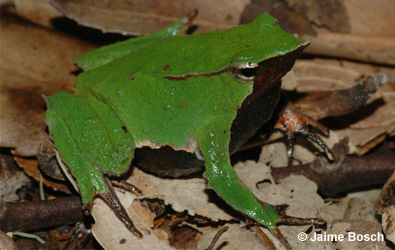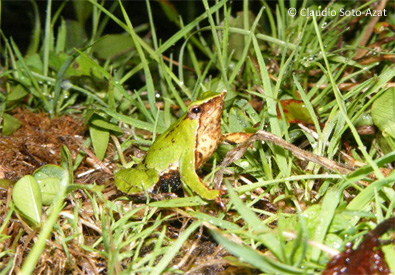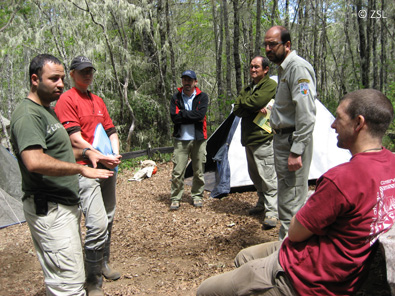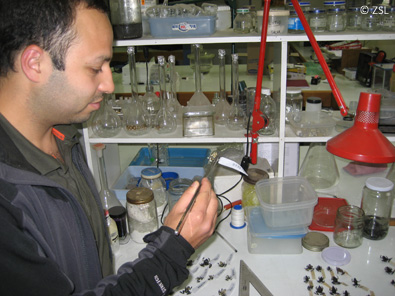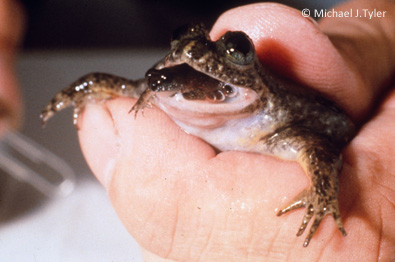Today’s Species of the Day is the Darwin’s frog (Rhinoderma darwinii). This is one of our EDGE amphibian focal species, along with its only close relative, the Chile (or Northern) Darwin’s frog (Rhinoderma rufum).
The two species of Darwin’s frogs are only known from the temperate forests of southern Chile and just into Argentina, and they are well camouflaged to look like the Chilean bamboo and monkey puzzle leaves found on the forest floor where they live. Both species of Darwin’s frog are also great parents exhibiting mouth-brooding behaviour – caring for their offspring in their mouths or, more specifically, their vocal sacs!
The males guard the eggs until the developing tadpoles start to wriggle, at which point he swallows the tadpoles into his vocal sac where the eggs hatch. The Chile Darwin’s frog incubates his tadpoles until they are able to eat and then hops from the damp nest site to pools of water, releasing them into the water. However, in the slightly less endangered relative, Darwin’s frog, the tadpoles develop into froglets (miniature frogs) within their father’s vocal sac, hopping out of his mouth about 50 days later.
Both species have been negatively impacted by the destruction of the native vegetation through the planting of pine, which dries the forest floor making it impossible for most frog species to live there. An EDGE expedition in 2008 searched for the Chile Darwin’s frog, but sadly struggled to find any suitable forest at all, and therefore we suspect that this species is already extinct. We spoke to numerous local people who recognised photos of the frog, but said they had not seen it for at least 30 years.
But loss of native forest is unlikely to fully explain this frog’s disappearance because population declines in Darwin’s frog has been seen in good habitat and in protected areas. This indicates it might be the result of climate change or disease, perhaps the amphibian fungal disease called chytrid, which has caused many amphibian declines globally.
EDGE is currently supporting a Chilean scientist, Claudio Soto, with funding and training. Claudio is investigating the threats to the Darwin’s frogs, in particular whether the chytrid fungal disease is a major threat. Understanding the threat processes is the first step in being able to save a species, so Claudio’s work will be incredibly valuable in ensuring the survival of this frog, and its unique mouth-brooding behaviour.
Unfortunately, the story of the Darwin’s frogs is almost an exact replay of the extinction of two Australian frog species – the northern and southern gastric brooding frogs. As their name suggests, these frogs had a similarly awesome parental behaviour where the females actually swallowed their eggs and brooded them in their stomach, before regurgitating the developed froglets.
During the brooding period the female’s digestive process would shut down and her stomach would become so bloated that her lungs would actually collapse under the pressure, forcing her to rely on breathing solely through her skin. In one case 22 young were documented brooding in the stomach of one female, and the ‘birth’ of the brood lasted 34 hours!
Sadly the chytrid amphibian disease has wiped out these two remarkable creatures. This disease can wipe out populations scarily fast – in fact, the northern gastric brooding frog was discovered in January 1984 and had been driven extinct by the disease just a year later.
The EDGE of Existence programme aims to preserve the Darwin’s frog mouth-brooding behaviour, so it is not lost like that of the gastric brooding frogs. To support our efforts, please donate here or become an EDGE Champion.
